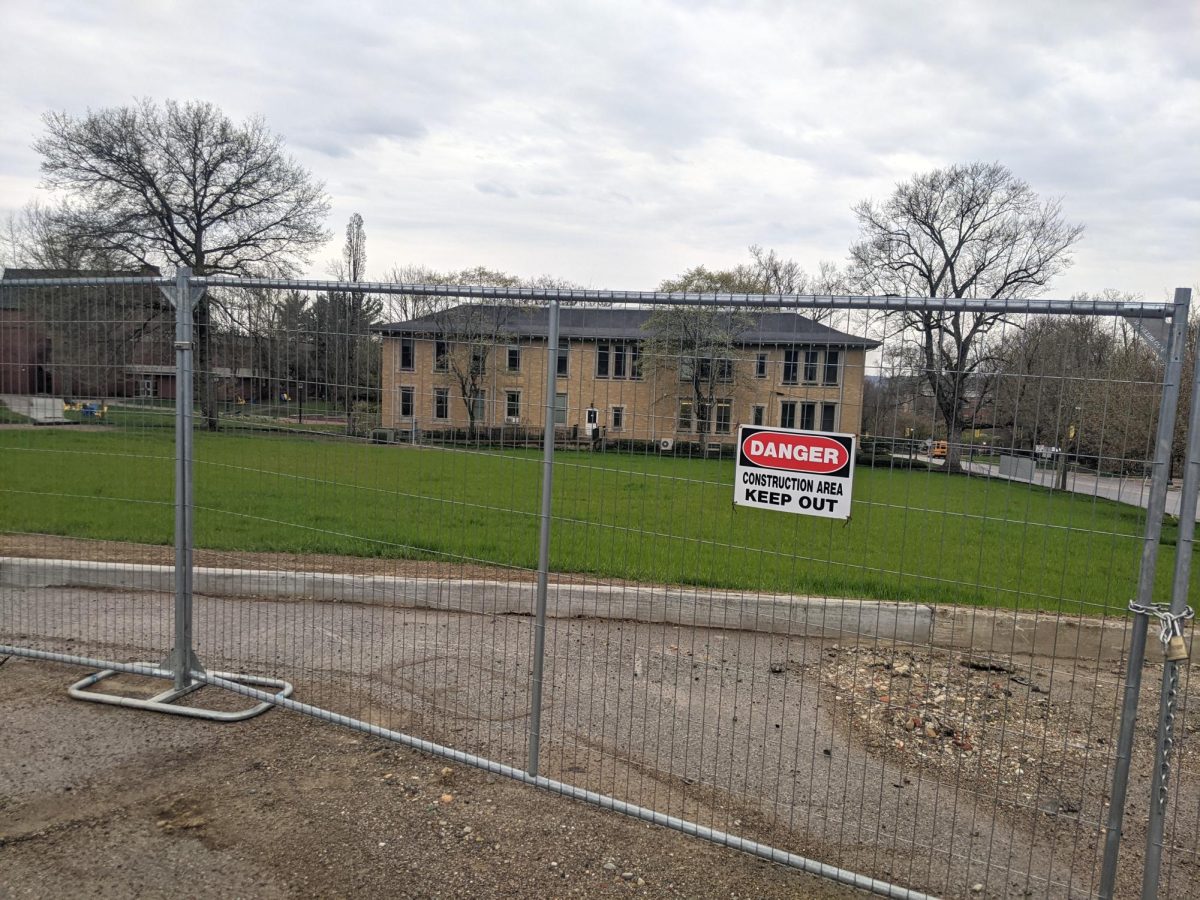
Most of Lewis Walker’s career was spent developing his invention, the hookless fastener. Later to be called the zipper, his invention became a worldwide success and funded Walker Hall and Walker Annex.
Although over 250 students live in Walker Hall and Walker Annex, many students are unaware of who Lewis Walker was—or, for that matter, the identities of the campus buildings’ other namesakes.
“I think a lot of it is that they don’t know about the history,” said Katherine Rich, ’12. “It’s really a beautiful campus, but we take it for granted.”
Much of what students do know about the buildings is based on campus mythology; Brooks is supposedly haunted, and if an upperclassman boy kisses a freshman girl on the 13th plank of the rustic bridge all freshman girls are off limits to freshman boys.
“I know Oddfellows was at one time an orphanage and at one time a full Masonic house,” said Derek Schultz, ’12. “Supposedly the building’s haunted.”
These rumors, however, don’t cover half of Allegheny’s long and rich history.
“Usually our buildings were named for someone that was living and made a large donation to the college,” said Allegheny College Historian and author of “Through All the Years: A History of Allegheny College,” Jonathan Helmreich. “Sometimes, the person made a particular impact while at the college.”
Walker’s original zipper factories, for example, helped Meadville’s economy survive through the Great Depression and launched a tool manufacturing industry that still exists today.
Yet Allegheny’s history begins not with Walker, but with the Reverends Timothy Alden and William Bentley, the two Harvard graduate scholars of theology and oriental languages who formed the college in 1815.
Alden, for whom Alden Hall is named, chose the village of Meadville as the place to build college and called upon Bentley and others to help him acquire a library of books.

Alden eventually collected the second largest literary collection among academic institutions in America; however, he did not have a building in which to keep them. Thus, Bentley Hall was built as the first library, named in appreciation of Bentley’s vast contribution to the library.
Crawford Hall is named for Rev. William H. Crawford, Allegheny’s President from 1893 to 1920. Crawford is known for his rigorous effort to strengthen the college as it entered the twentieth century.
“Crawford set out to focus on quality undergraduate education,” Helmreich said. “Allegheny offered doctorate degrees and opened a preparatory school, but he ended these to offer strictly undergraduate curriculum.”
By the time Crawford retired from presidency, he had tripled the number of buildings from four to 12, increased the number of faculty from six to 35 and expanded the curriculum. This infrastructure development was possible thanks to Crawford’s ability to raise funds from donors such as Andrew Carnegie, the namesake of Carnegie Hall.
“He was instrumental in bringing the college to a level of national notoriety,” Helmreich said.
Arter Hall is dedicated to Francis Asbury Arter, an Allegheny graduate of the class of 1884. After graduation, Arter started a small oil refinery in Cleveland, which he sold to John D. Rockefeller for shares of stock in Standard Oil
Arter donated1,000 shares of American Shipbuilding Company stock to Allegheny, which funded the construction of Arter Hall, one of Allegheny’s first academic buildings.
Ernest L. Baldwin was a lawyer and an 1884 Allegheny graduate. He was appointed by none other than President William McKinley to be the Chief Assistant U.S. Attorney for the Southern District of New York.
“President McKinley probably did not take note of Baldwin’s time at Allegheny when appointing him,” Helmreich said.
In his will, Baldwin left $300,000 to the college for the construction of a dormitory: Baldwin Hall.
Brooks Hall is named for the wife of Charles Arthur Brooks. Brooks, who emigrated from Ireland at 16, found a job with the Atlantic and Pacific Tea Company and later helped it to expand west of the Allegheny Mountains. A longtime Trustee, Brooks donated $100,000 for the construction of a women’s dormitory in memory of his wife, Anna.
Arthur and William Steffee are brothers who graduated with biology degrees from Allegheny in 1956 and 1957. Arthur earned his M.D. from McGill University and became an innovative orthopedic surgeon. He developed and completed the first known surgical replacements of the knuckle, knee and vertebrae. He later founded AcroMed Corporation, which manufactured spinal implant devices.
William earned an M.D. from the University of Pennsylvania and PhD in biochemistry from M.I.T. He taught at Boston University School of Medicine before assuming the Chief Executive Officer Position of AcroMed. The brothers sold AcroMed after it grew, reaching revenues of $90 million. Each brother donated $2 million toward the completion of a much-needed new science building: Steffee Hall of Natural Sciences.
Despite the rich histories behind the names of Allegheny’s buildings, most students are concerned more with the classes that take place within them than the people that inspired them.
“I think people appreciate our campus but don’t really stop to think if a building is old or new,” said Lara Fleckenstein, ’11.







